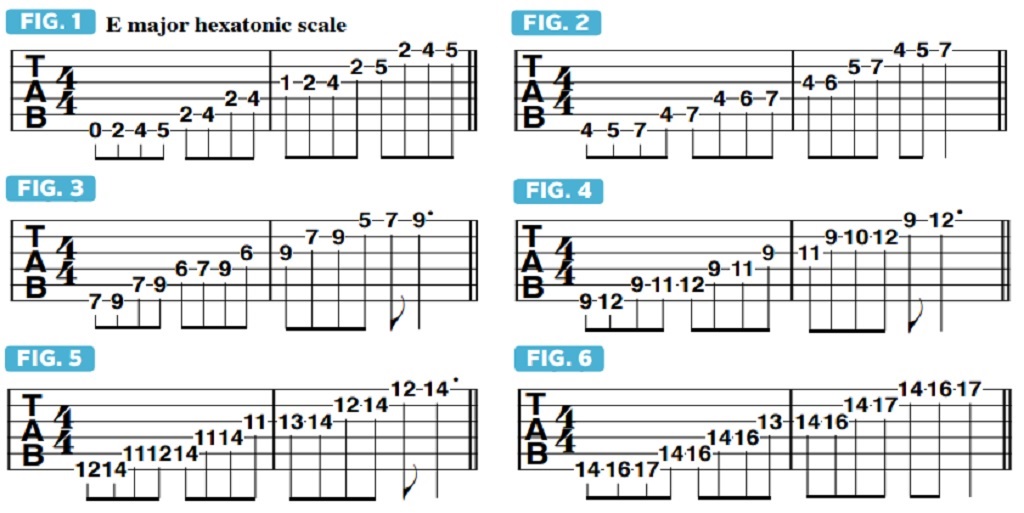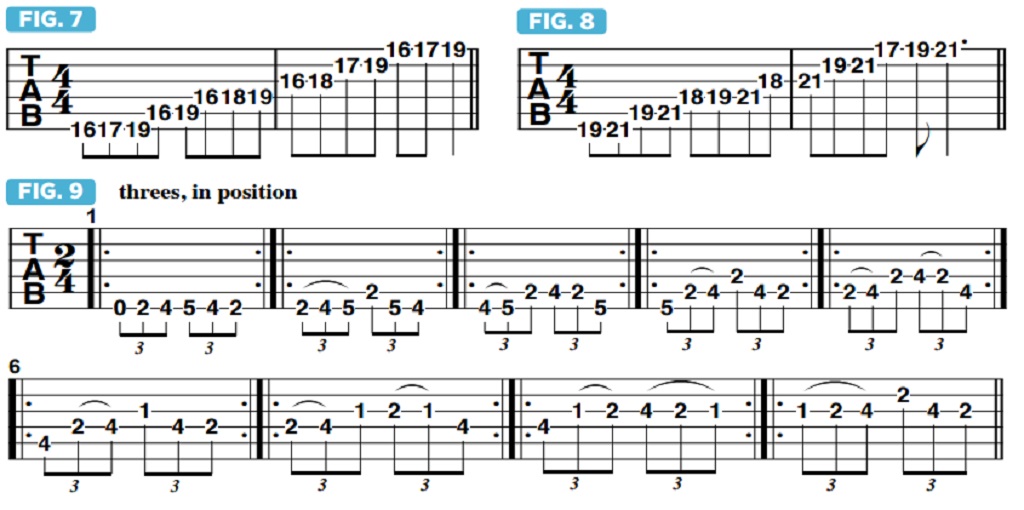Supercharge your pentatonic solos with the six-note major hexatonic scale
Adding one scale degree to major pentatonic can yield a plethora of exciting new lead-writing opportunities
Last time, we looked at one of the most essential scales for improvisation, major pentatonic. Pentatonic means “five-tone,” and spelled intervallically, the scale degrees are 1 (root), 2, 3, 5, 6.
In the key of E, that would be E, F# , G# , B, C# , and in the key of A, the notes are A, B, C# , E, F#. Every well-known and influential guitarist of the last 100 years in virtually every style of music has utilized major and minor pentatonic scales, moving seamlessly between them while soloing. I encourage everyone to learn both scales in every key and in every position of the fretboard.
Equally useful, as an improvisational and compositional resource, is a six-note scale that simply adds one scale degree to the structure of major pentatonic. This scale is major hexatonic, as the term hexatonic means “six-tone.”
Major hexatonic is formed by adding the 4th to the major pentatonic scale, and it’s intervallically spelled 1, 2, 3, 4, 5, 6. E major hexatonic is spelled E, F# , G# , A, B, C# . A major hexatonic is spelled A, B, C# , D, E, F# .
The major hexatonic scale is closely associated with the soloing and writing style of founding Allman Brothers Band guitarist Dickey Betts, as he has used it often and successfully in both his composed and improvised melodies.
Two of Dickey’s best-known compositions, Blue Sky and Jessica, are built around the E and A major hexatonic scales, respectively, and he and Duane Allman constructed beautifully creative and memorable solos while remaining squarely in the hexatonic environment.

As is standard practice for studying scales, let’s move up the neck through all of the scale positions of E major hexatonic that reside within a four-fret span. FIGURE 1 illustrates E major hexatonic in 1st-2nd position.
Play the scale repeatedly and in ascending and descending fashion in order to memorize it. FIGURES 2-8 show fingering patterns for the same scale played in higher fretboard positions.

A great way to get scale patterns like these under your fingers while also cultivating a vocabulary of melodic shapes based on the scale is to play patterns of threes. This can be done in a single position across all six strings, ascending the fretboard on a specific pair of strings, or by combining the two approaches by moving across and up the fretboard simultaneously.
In FIGURE 9, four-note patterns played as eighth-note triplets move across the fretboard in 1st-2nd position. Play each one-bar cell repeatedly until it feels comfortable and natural.
In FIGURE 10, groups of eighth-note triplets ascend the fretboard on the bottom two strings only. In FIGURE 11, the two approaches are combined, starting in 6th-7th position in bars 1-3, then ascending to 9th position and the higher strings in bars 4-6.

Get The Pick Newsletter
All the latest guitar news, interviews, lessons, reviews, deals and more, direct to your inbox!
Guitar World Associate Editor Andy Aledort is recognized worldwide for his vast contributions to guitar instruction, via his many best-selling instructional DVDs, transcription books and online lessons. Andy is a regular contributor to Guitar World and Truefire, and has toured with Dickey Betts of the Allman Brothers, as well as participating in several Jimi Hendrix Tribute Tours.
“There are so many sounds to be discovered when you get away from using a pick”: Jared James Nichols shows you how to add “snap, crackle and pop” to your playing with banjo rolls and string snaps
Don't let chord inversions bamboozle you. It's simply the case of shuffling the notes around








![Joe Bonamassa [left] wears a deep blue suit and polka-dotted shirt and plays his green refin Strat; the late Irish blues legend Rory Gallagher [right] screams and inflicts some punishment on his heavily worn number one Stratocaster.](https://cdn.mos.cms.futurecdn.net/cw28h7UBcTVfTLs7p7eiLe.jpg)


